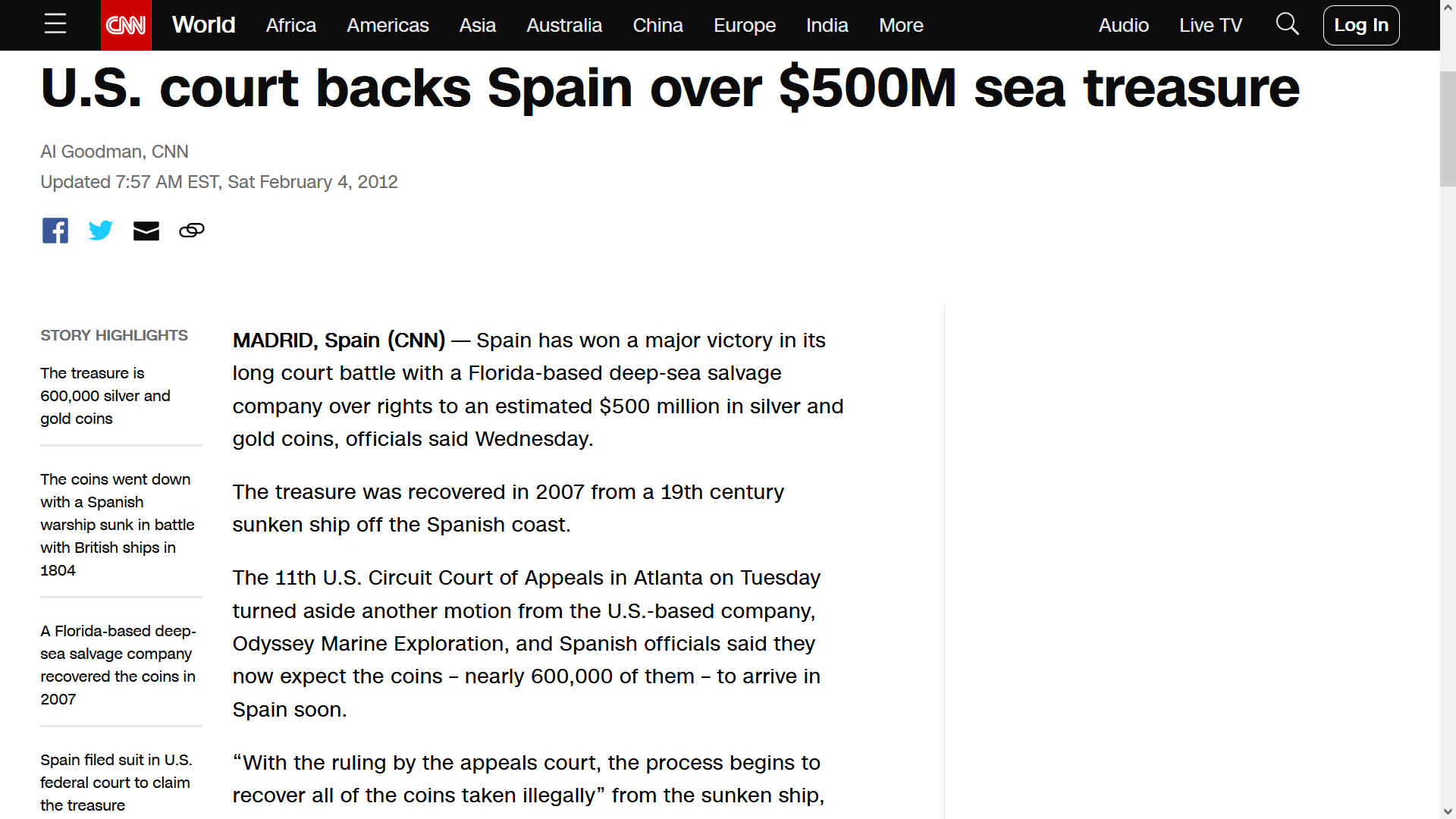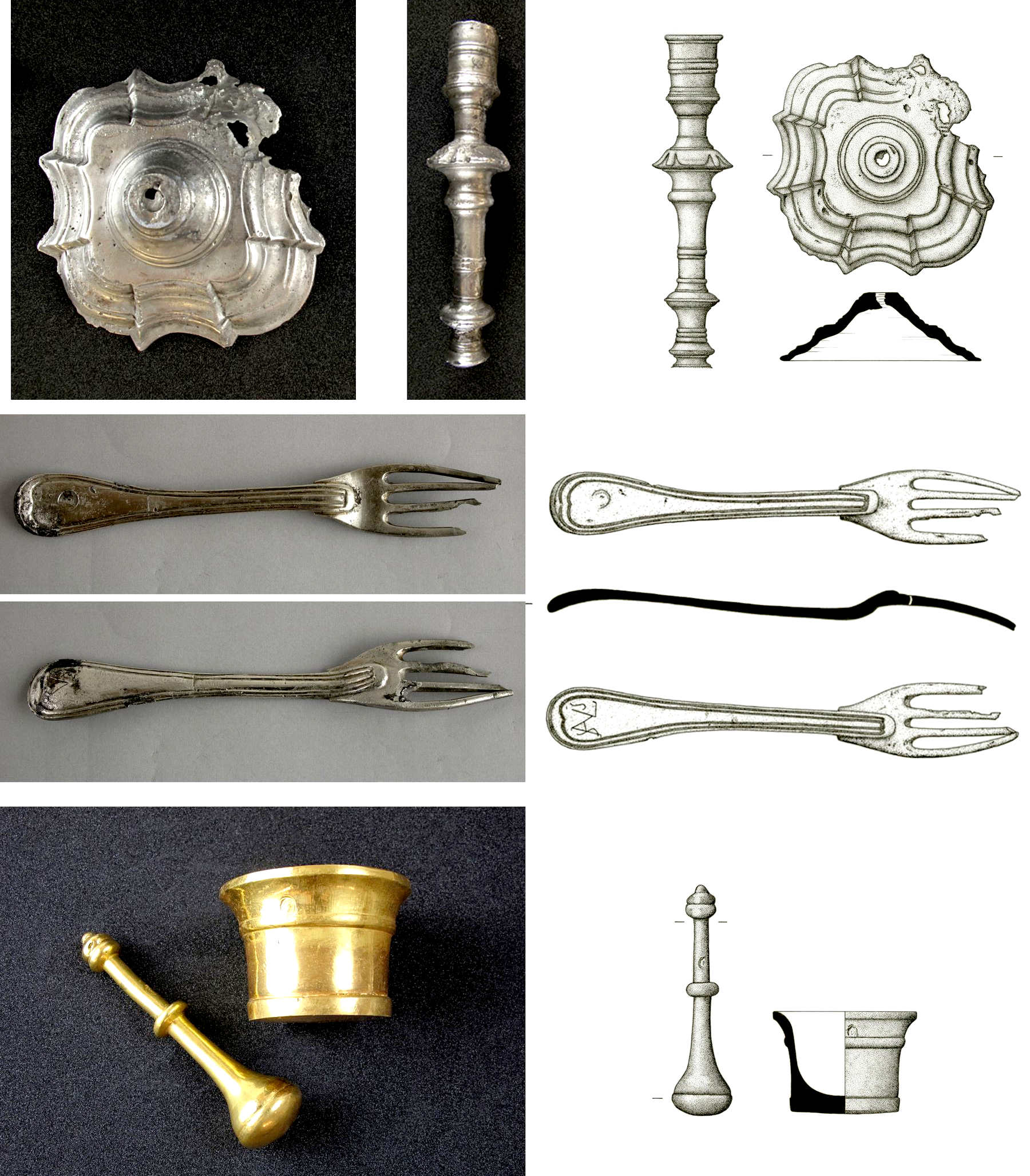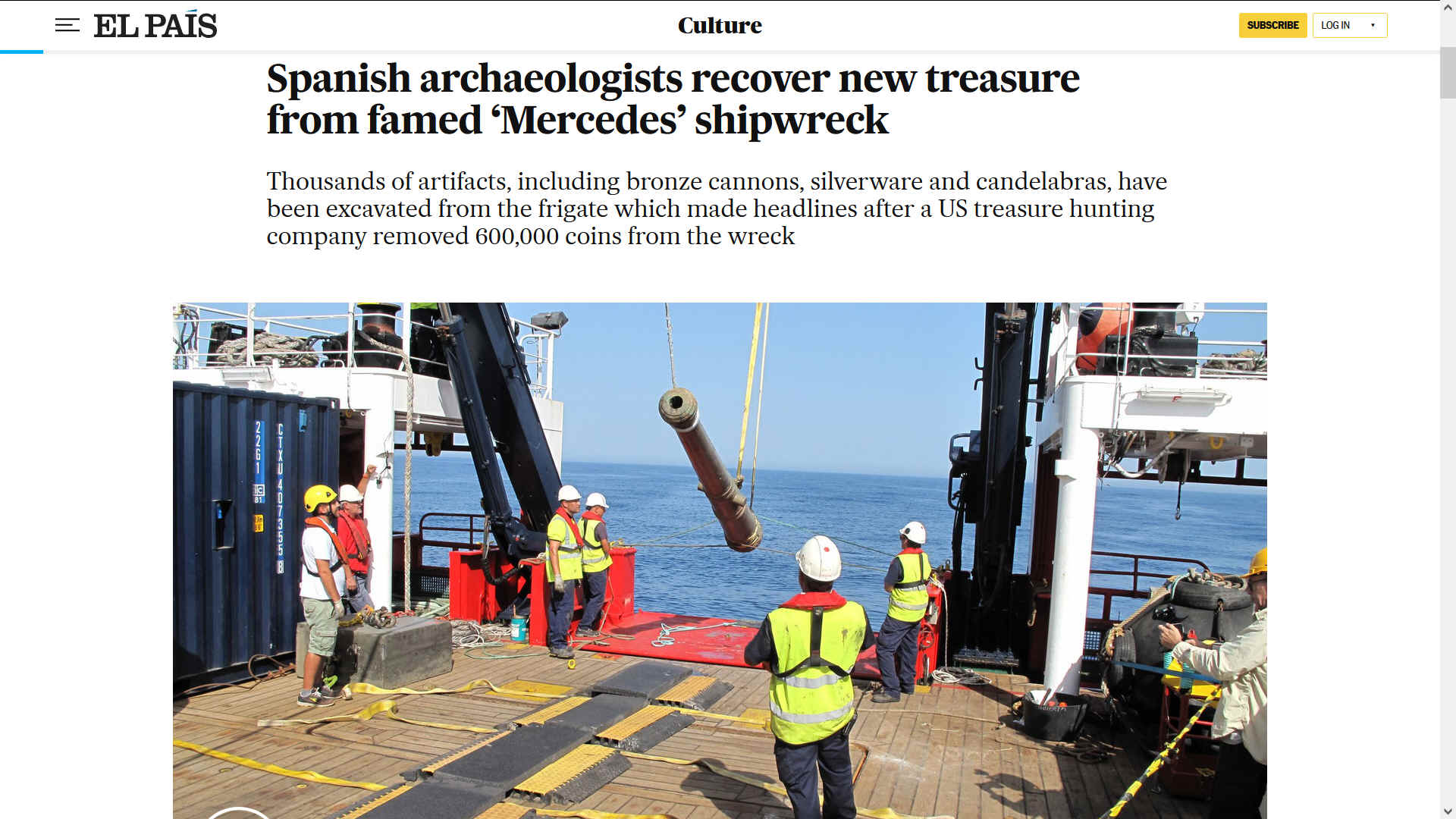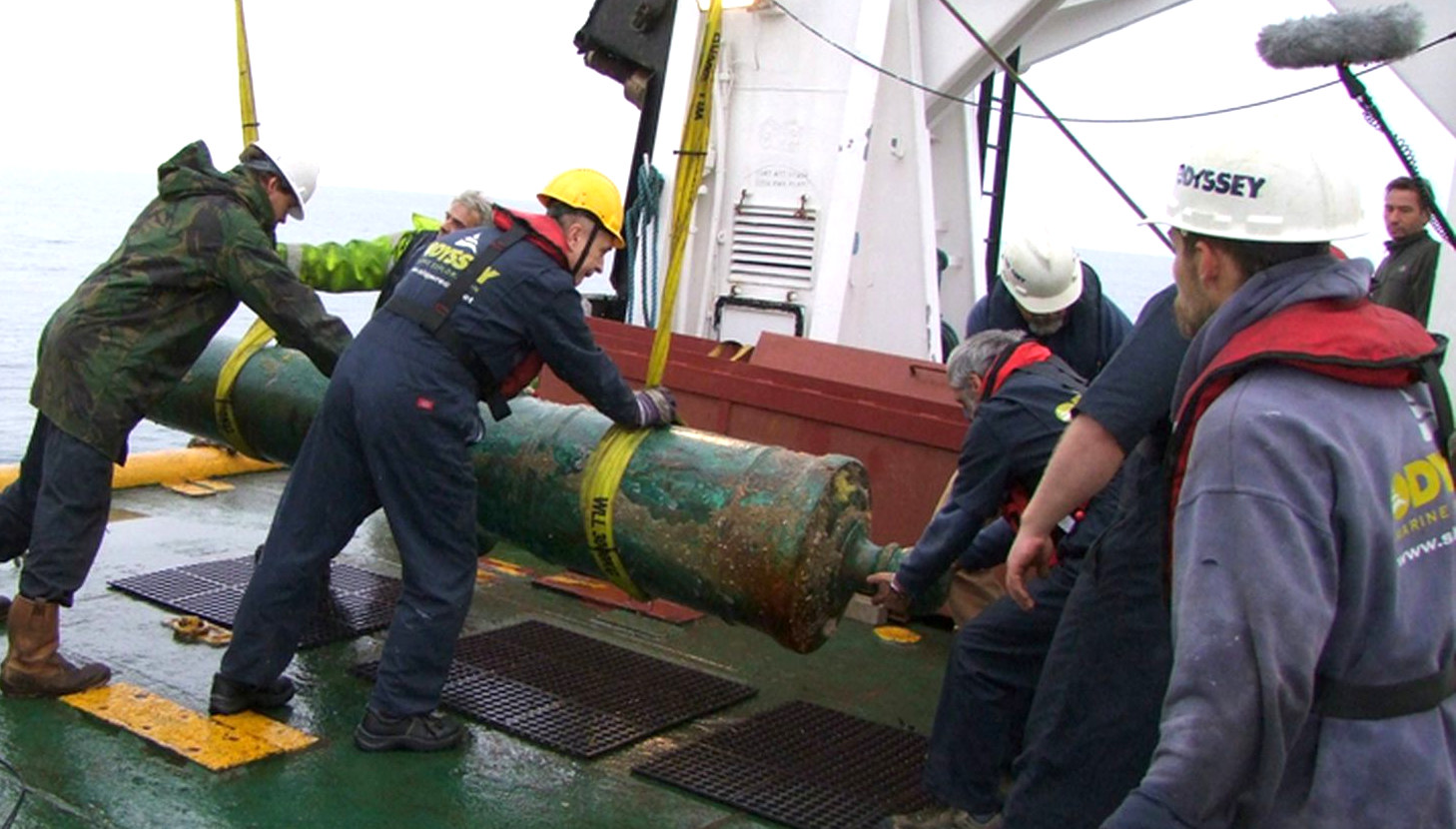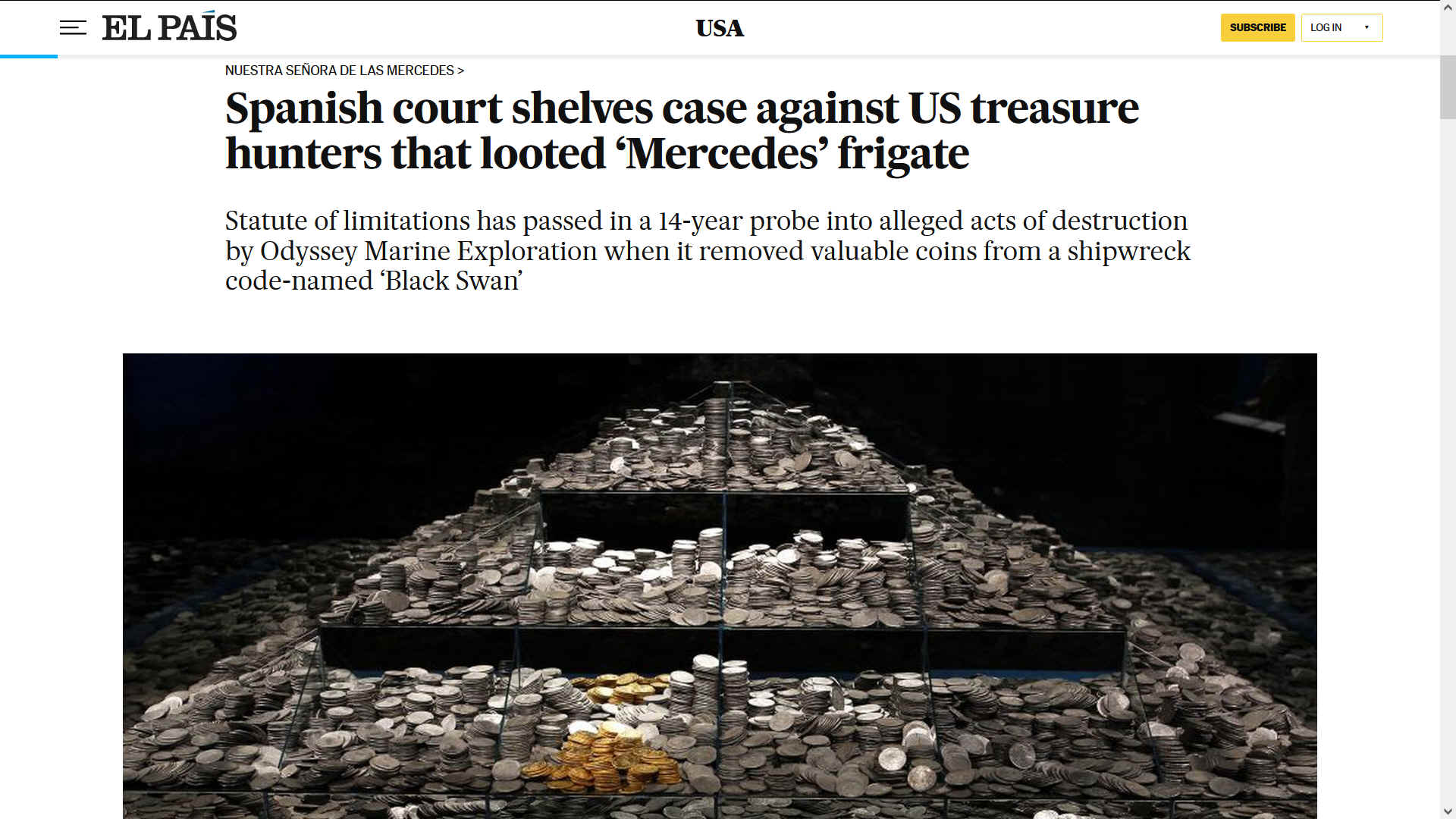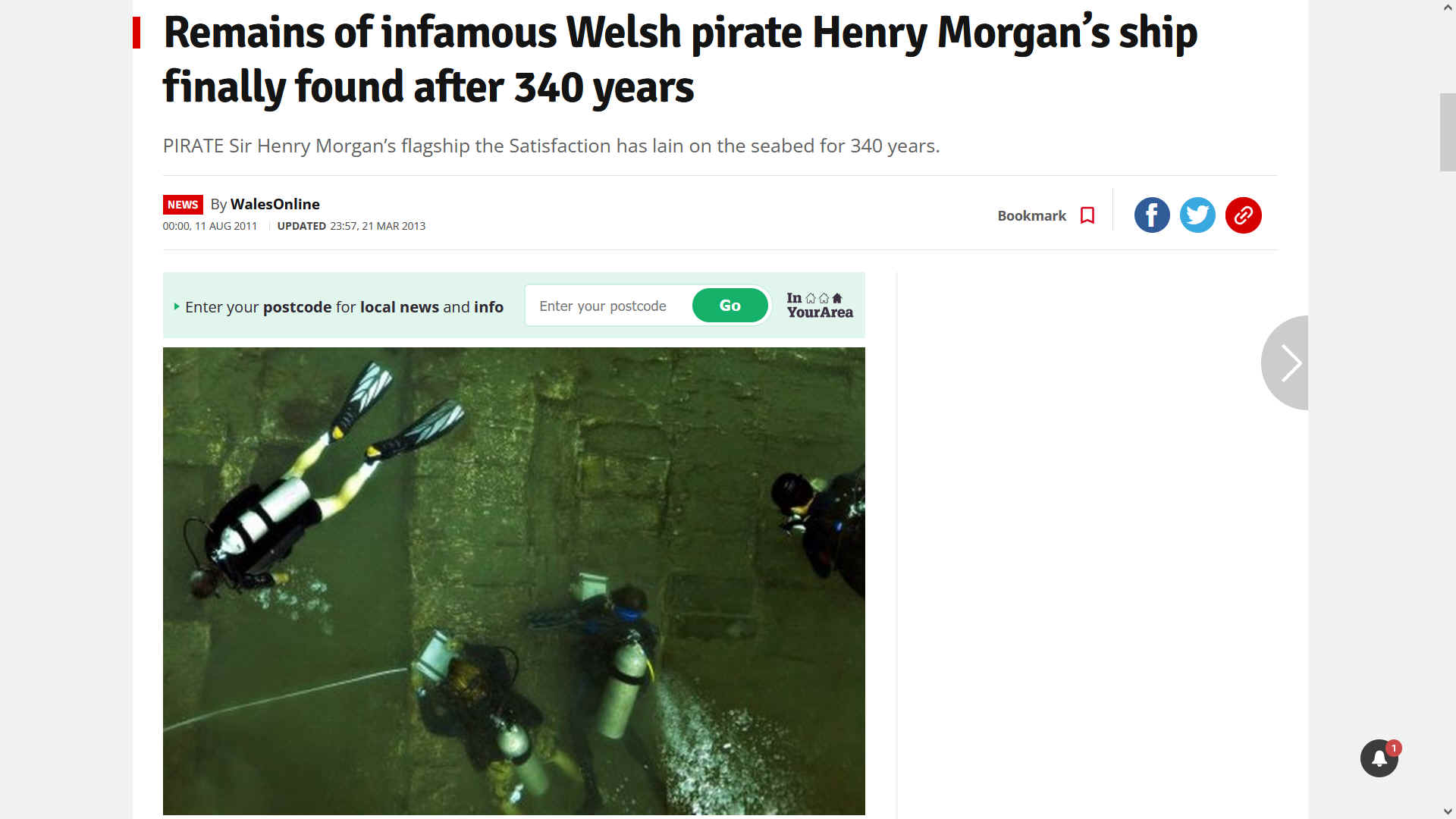|
PRECIOUS METALS & STONES
In your redemptive quest use our A - Z or steer a righteous course HOME toward enlightenment praise the Lord
|
|
|
|
|
Spain won a major victory is a long court battle against Florida based Odyssey salvage company
The four primary precious metals are gold, silver, platinum, and palladium.
Pearls
are also something to behold.
Odyssey Marine Exploration's interest in the Spanish frigate
was the cargo of silver and gold that it was carrying. That was made clear by the destruction caused by the company in the archeological area where the remains of the 275 people killed in the attack in 1804 lay.
The battle royal began
in 2007 when Odyssey said it had found the sunken treasure. It quickly laid claim to the coins, put them in crates and
flew them to a discreet, well-guarded location in the United States.
Spain believes that the main part of the nearly 600,000 coins are currently in Florida, Goold said.
JOHN STORM'S TREASURE SHIP DISCOVERY
In this fictional series of nautical adventures, our marine conservationist, John Storm, discovers a wreck believed to have belonged to Henry Morgan, privateer, but unsubstantiated. On that wreck John discovers a haul of gold and silver. And chests full of precious stones; diamonds, rubies, emeralds and others laden with pearls.
Though Hal, the AI on the Elizabeth Swann, notes the position of the wreck carefully, John does not have a record of that location in his written Ship's Log. According to marine salvage law, he is under no obligation to disclose any information as to the contents of a vessel that he cannot be sure of. Indeed, John does not have time to try and locate the rightful owner(s) of any part of the cargo, let alone conduct a detailed inventory, to even begin such a mammoth task. Even the ownership of the sunken vessel is not known for sure. And John did not conduct a dive survey, by himself, or working with any other organization.
John had contacted several nations with a view to them helping fund excavations and recovery should he find the lost treasure of any pirate operating in the Caribbean. These communications including negotiations for a finders fee, under treasure trove law. But, those nations refused to reciprocate. Instead, they demanded information from him, and tried to board his ship in international waters. To no avail, the Swann is designed to repel all unauthorized personnel, thanks to his Wizard uncle, Professor Storm.
Regardless of the legal obstacles, several claims are filed against the adventurer, by Jamaica, Panama, Spain and United Kingdom, by way of SLAPP actions, hoping to get lucky, but none can be substantiated. The Courts eventually ruling in favour of John Storm, and their claims struck out as being worthless, the Claimant's demonstrating no Locus Standi, when challenged. John vanquishes the pretenders, with the able assistance of George Franks, of Swindles & Gentry, Solicitors, Melbourne & Australia. The Court awards substantial sums to be paid to John Storm, against what can only be described as a prosecution laden with malicious intent, by way of a Wasted Costs Order. Court's do not like time wasters, or those who abuse due process. Nobody is above the law!
Divers surveying the 'Satisfaction' - Henry Morgan's flagship, discovered in 2011
REFERENCE
https://edition.cnn.com/2012/02/01/world/europe/spain-u-s--treasure-dispute/index.html https://edition.cnn.com/2012/02/01/world/europe/spain-u-s--treasure-dispute/index.html
|
|
|
In your redemptive quest use our A - Z or steer a righteous course HOME toward enlightenment praise the Lord
This website is Copyright © 2022 Cleaner Ocean Foundation & Jameson Hunter
|
